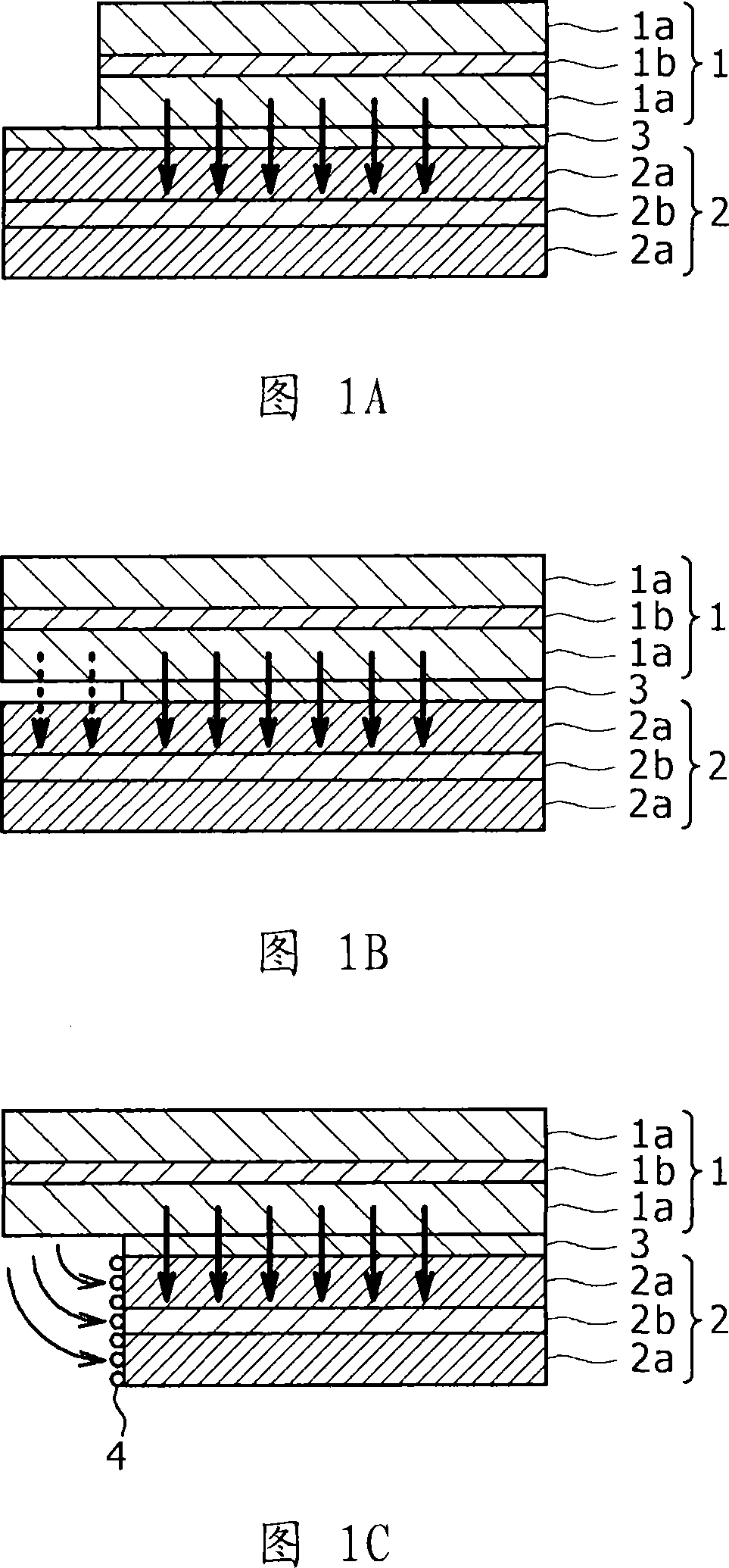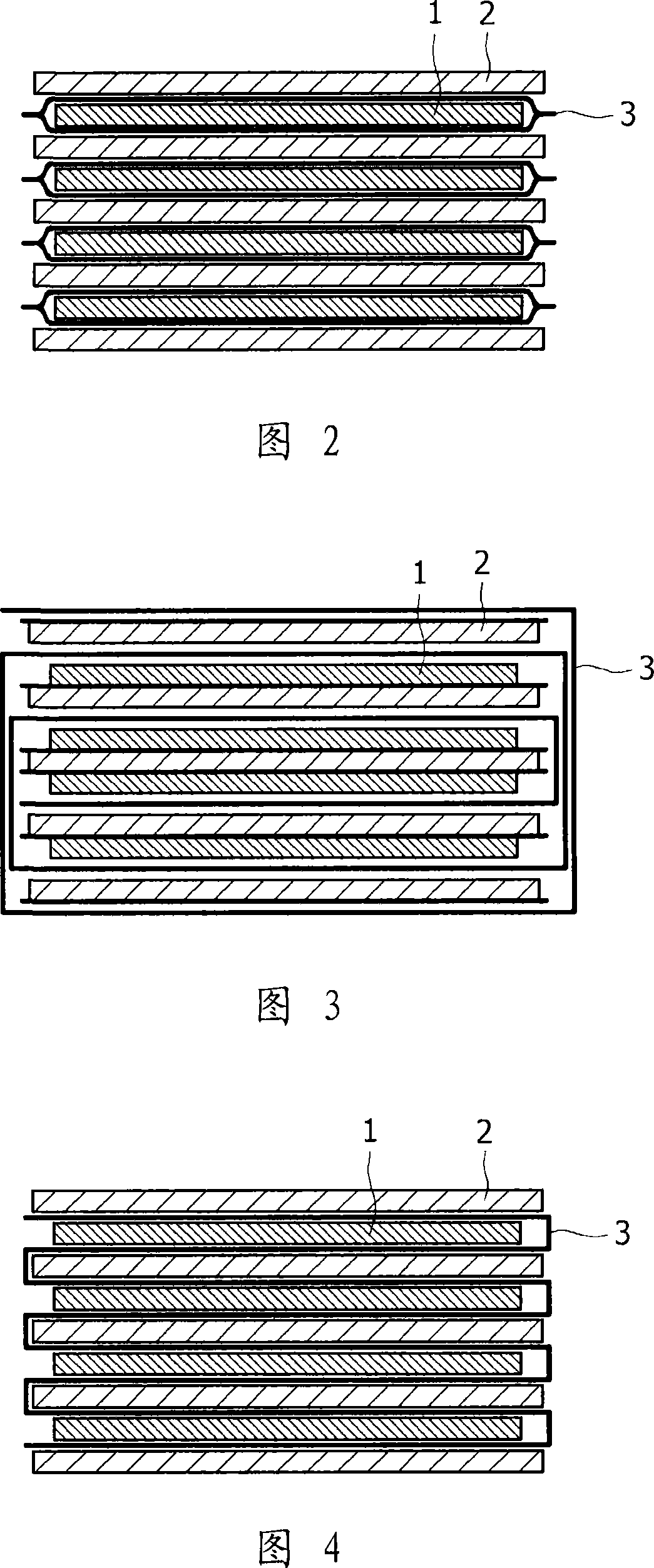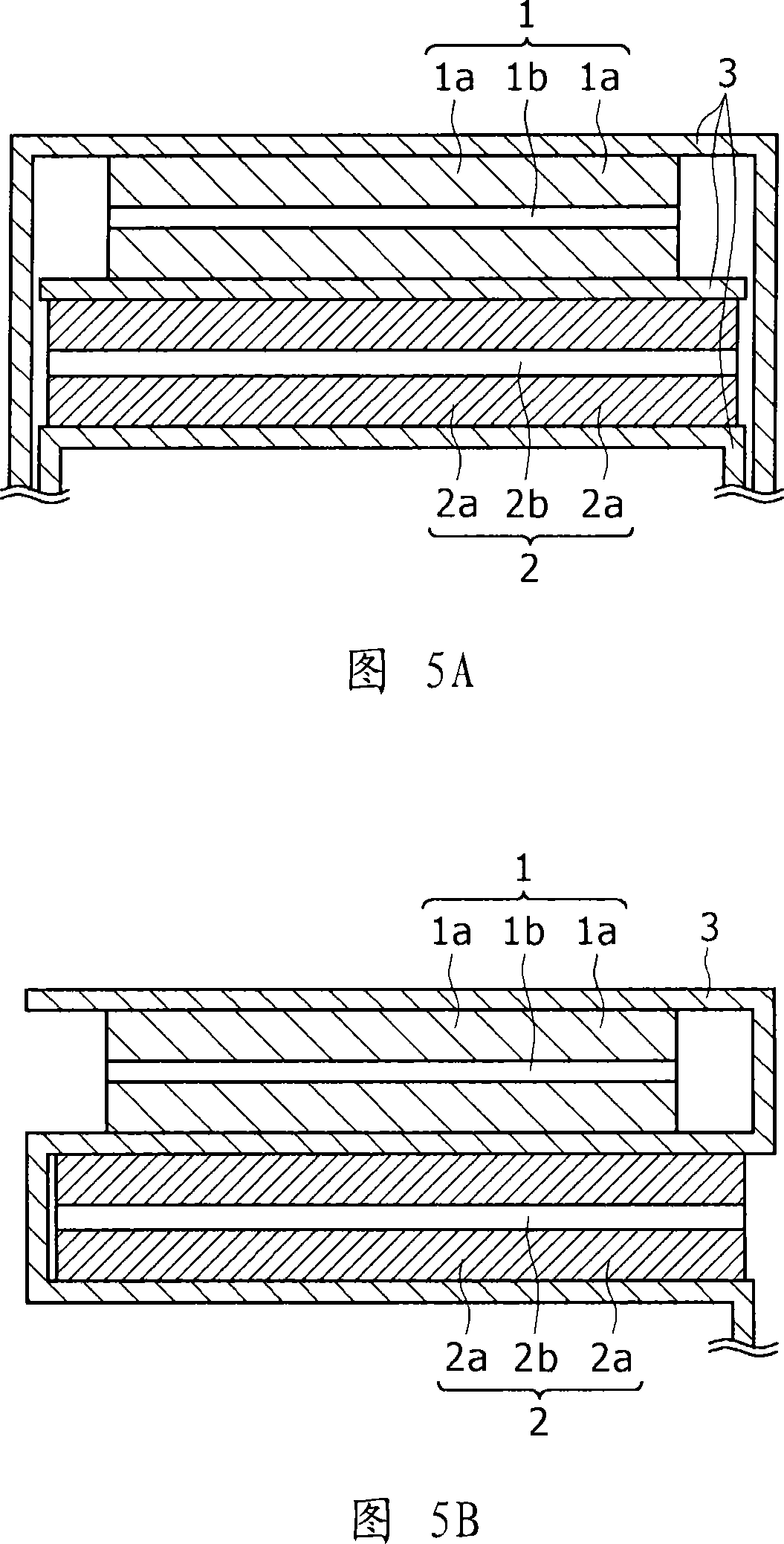Stacking nonaqueous electrolytes battery and manufacturing method thereof and stacking equipment
A technology of non-aqueous electrolyte and stacking equipment, which is applied in the field of stacking non-aqueous electrolyte batteries and their manufacturing and stacking equipment, and can solve problems such as battery short circuit, short circuit, abnormal heating, etc.
- Summary
- Abstract
- Description
- Claims
- Application Information
AI Technical Summary
Problems solved by technology
Method used
Image
Examples
example 1
[0103] Manufacturing anodes
[0104] By uniformly mixing 92wt% lithium cobalt oxide (LiCoO 2), 3 wt% of powdered polyvinylidene fluoride and 5 wt% of powdered graphite to prepare an anode mixture, and the mixture was dispersed into N-methyl-2-pyrrolidone (NMP) to make an anode mixture slurry. This anode mixture slurry is uniformly coated on both surfaces of an aluminum (Al) foil that will become an anode current collector, vacuum-dried at 100°C for 24 hours, and thereafter compression-molded by a rolling device, thereby forming Anode active material layer.
[0105] manufacture cathode
[0106] A cathode mixture was prepared by uniformly mixing 91 wt% of artificial graphite and 9 wt% of powdery polyvinylidene fluoride, and the mixture was distributed into N-methyl-2-pyrrolidone (NMP) to manufacture a cathode mixture slurry. The cathode mixture slurry was uniformly coated on both surfaces of a copper (Cu) foil that will become a cathode current collector, and vacuum-dried at ...
example 2
[0112] After stacking the anode, cathode, and separator and fixing the stacked product, the stacked product was shaken by hand five times each in the lying position and the upright position, as shown in FIGS. 14A and 14B . A battery element was produced similarly to the case of Example 1 except that vibration was applied after stacking.
example 3
[0114] After stacking the first to thirteenth cathodes, the stacking device is held in the hand, and is raised and lowered during the stacking of the thirteenth to sixteenth cathodes. A battery element was produced similarly to the case of Example 1 except for the above operations. It should be noted that "during stacking" means the period during which the suction device picks up the electrodes and the separator and descends to their stacked position.
[0115] X-ray CT (computed tomography) was used to image each example of the battery element thus produced, the plane section indicated by P intersects the X axis along the side of one battery element, and the plane section indicated by Q along the The bottom of a cell element intersects the Z axis, as shown in Figure 15. It should be noted that, in each of the sides and the bottom, planar sections were taken at a position 15 mm from one of the corners of the bottom, and these planar sections were to be observed.
[0116] In t...
PUM
| Property | Measurement | Unit |
|---|---|---|
| size | aaaaa | aaaaa |
Abstract
Description
Claims
Application Information
 Login to View More
Login to View More - R&D
- Intellectual Property
- Life Sciences
- Materials
- Tech Scout
- Unparalleled Data Quality
- Higher Quality Content
- 60% Fewer Hallucinations
Browse by: Latest US Patents, China's latest patents, Technical Efficacy Thesaurus, Application Domain, Technology Topic, Popular Technical Reports.
© 2025 PatSnap. All rights reserved.Legal|Privacy policy|Modern Slavery Act Transparency Statement|Sitemap|About US| Contact US: help@patsnap.com



